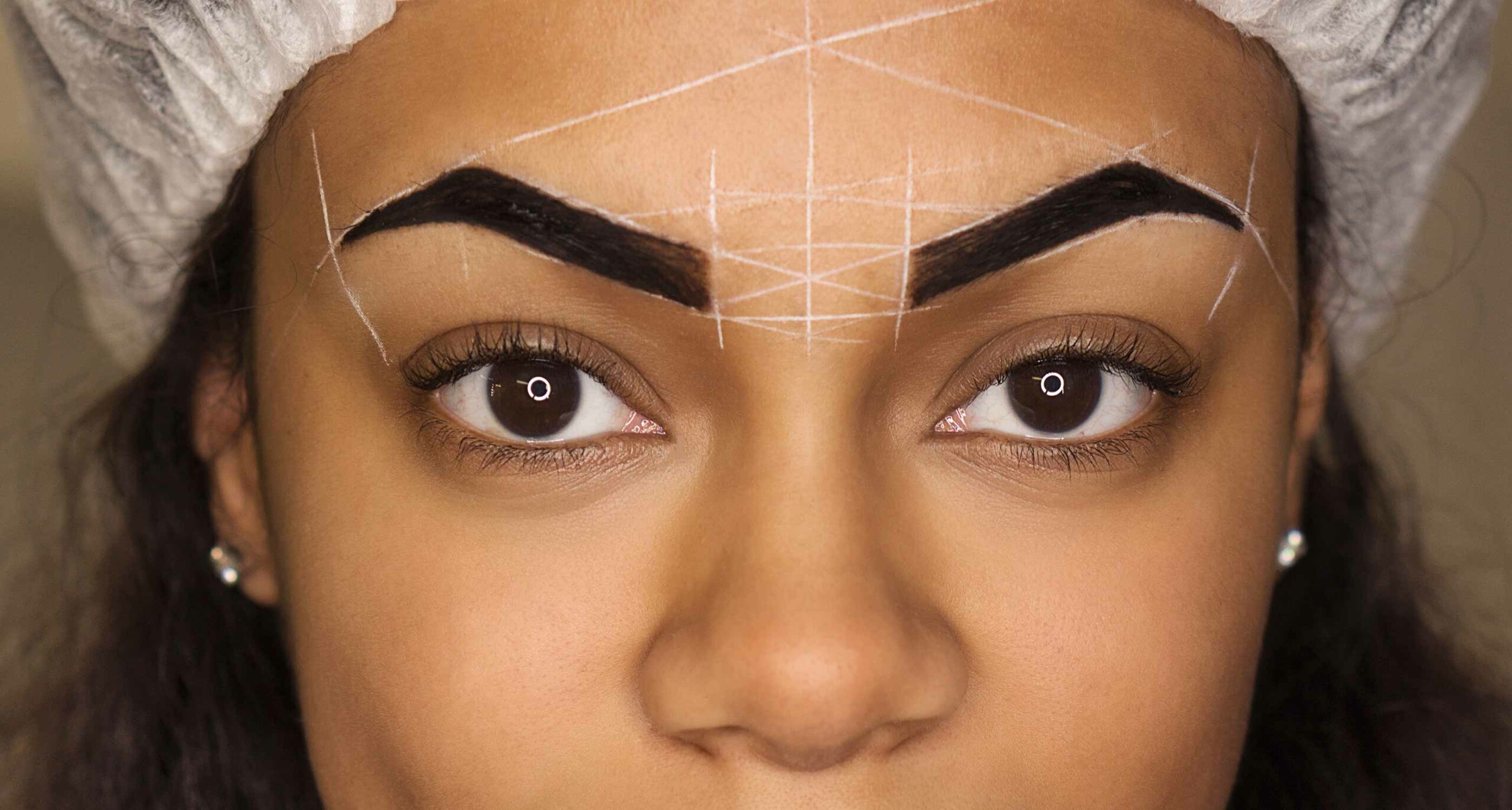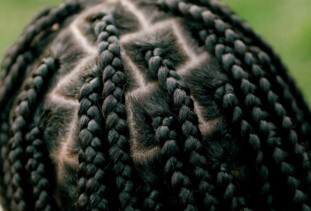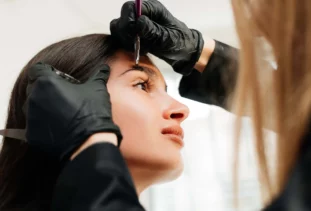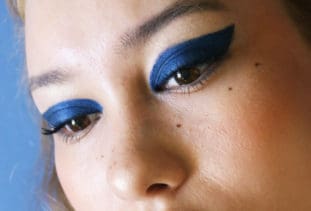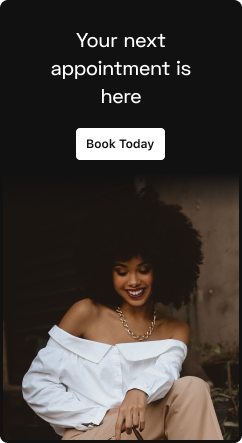In the last few years, a number of different eyebrow treatments have gained popularity — from microblading and brow lamination to eyebrow threading and feathering. Now, a new eyebrow service is finding its place on beauty salon menus across the country: a form of eyebrow tinting called henna brows.
You’ve probably heard of henna before. It’s an all-natural plant dye used to temporarily tattoo decorative floral patterns on the skin, mostly in South and Southeast Asian and Eastern European countries. Eventually, henna made its way to the West as a sought-after hair dye alternative, preferred by many over harsh synthetic hair dyes. It wasn’t long before henna’s hair-dying and skin-staining properties were found to be beneficial for eyebrows, too — now, the henna brows trend is here to stay.
What are henna eyebrows?
Henna eyebrows are achieved with a semi-permanent tinting treatment that colors existing brow hair and leaves a soft stain on the skin for added definition. The treatment offers an alternative to more permanent services like microblading, and is a great solution for adding volume and definition to sparse eyebrows without the use of needles. Henna brows can last up to five weeks on hair and between two and 10 days on the skin, making it a great option for trying out a new brow shape before committing to a more permanent process.
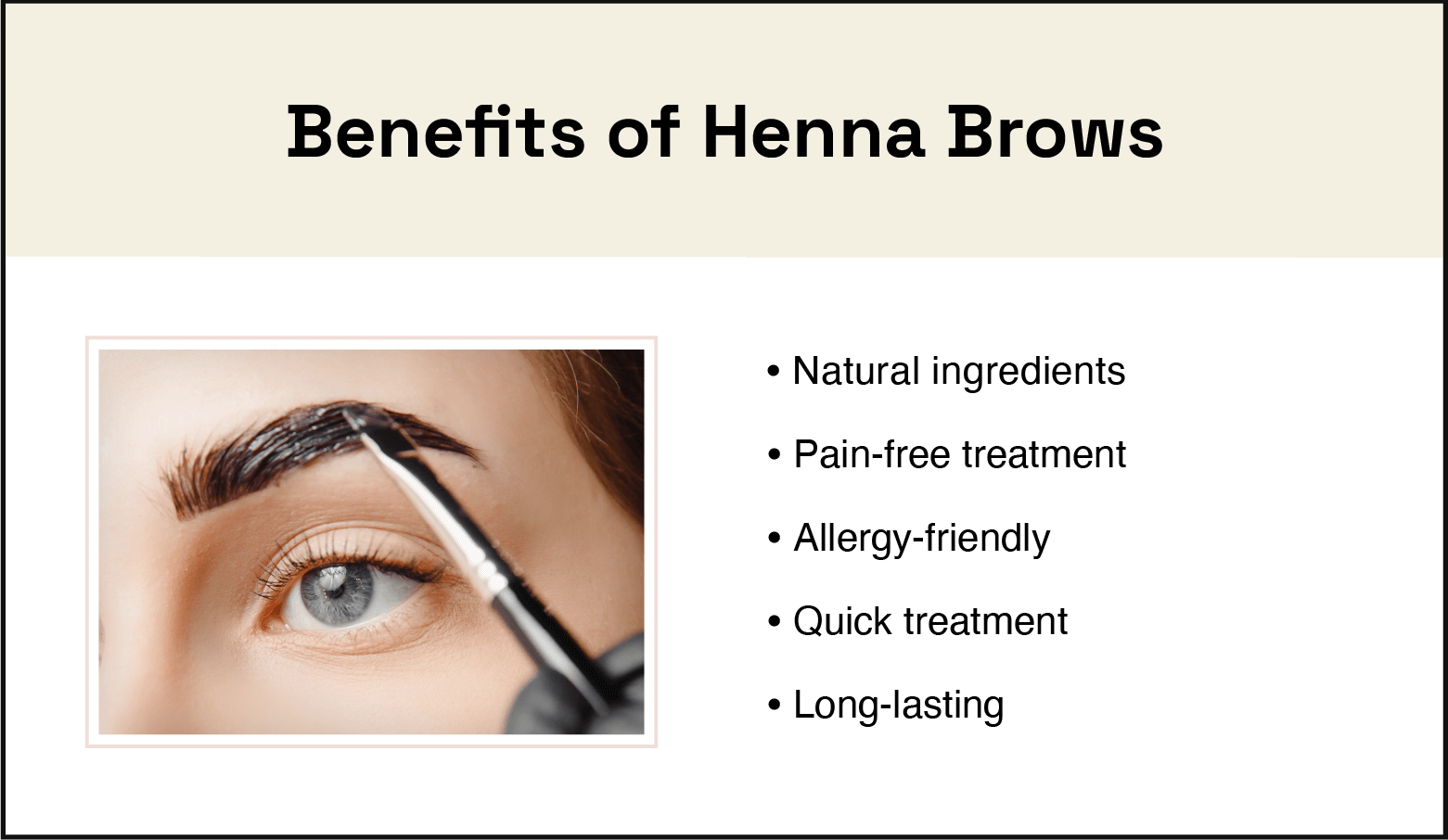
Henna is an all-natural powder derived from the hina (or henna) tree. The dye is prepared by drying and crushing hina tree leaves into a powder to create a more gentle type of dye that doesn’t contain any ammonia or lead. Unlike other eyebrow tinting or coloring dyes, henna doesn’t require hydrogen peroxide to activate, making it safe to use if you have sensitive skin or peroxide allergies.
What’s the difference between brow tinting and henna brows?
While both brow tints and henna can give you more defined, fuller-looking brows, there are key differences between the two that are important to understand before booking an appointment. Henna brows can last much longer (up to five weeks) than a brow tint (two to four weeks). That’s because while a brow tint only dyes your eyebrow hairs, henna goes a step further by also staining the skin beneath them for added definition.
This also leads to differences in the type of look each treatment can give you. Since brow tints only dye the brow hairs, they’re ideal if you’re after a more natural look or just want a subtle change in the appearance of your eyebrows. Henna brows, on the other hand, offer an extra level of depth and definition due to the skin-staining element. They’re also ideal for those with sparse eyebrows, as the stained skin creates a more filled-in look in the places where you may not have much natural hair.
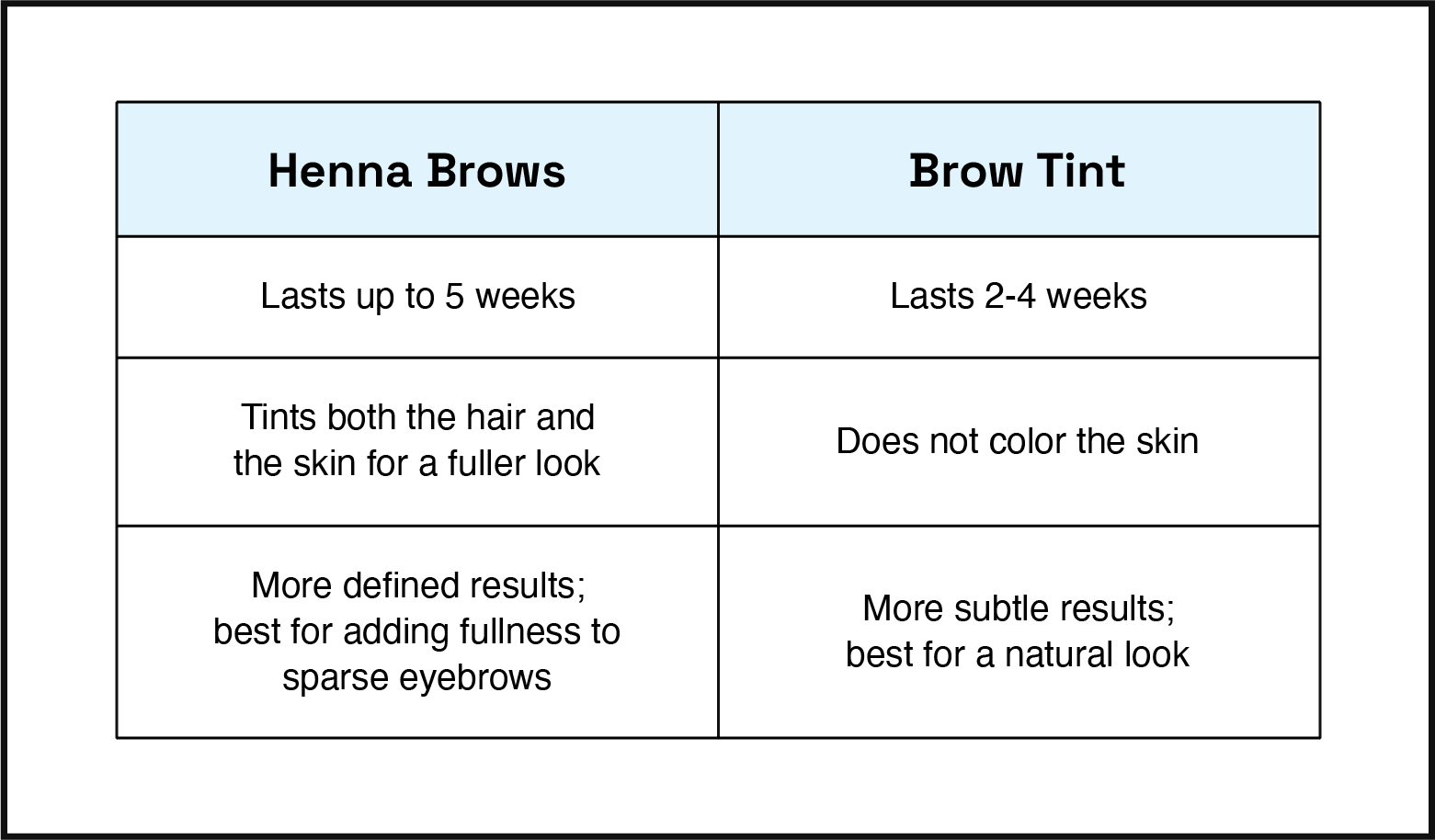
Will it turn my eyebrows reddish-brown?
While many people associate henna with a reddish-brown color, henna brows are specially formulated to work with a full spectrum of eyebrow tones, from light blonde to jet black. While a henna brow treatment is possible if you have very dark hair, it’s important to note that black henna dyes do contain a chemical called PPD (paraphenylenediamine) that can be dangerous and lead to an allergic reaction. Always perform a patch test before a henna brow treatment for black hair.
Does henna cover gray or white hairs?
Because it absorbs much faster and deeper into hair follicles than a typical eyebrow tint, henna takes beautifully to gray or white hairs.
What side effects can I expect?
Since henna dye is naturally derived and has far fewer chemicals than brow dyes used in other brow treatments, the potential for an allergic reaction is usually much lower. Always perform a patch test before treatment to ensure you won’t have a reaction. The only other side effect to be aware of with henna brows applies to those with dry skin. Henna is a natural exfoliant, so if you already have dry skin, there’s a chance it might dry out your skin further.
What does the process look like?
A henna brow treatment has a similar process to a normal brow tint treatment. Here’s what to expect:
1. Brow shaping
Like any eyebrow treatment, the process typically begins with shaping the brows via threading, waxing, or tweezing to help achieve your desired shape.
2. Brow exfoliating
For a successful henna brow application, the skin beneath and surrounding the eyebrows must be free of any oils, dirt, or makeup residue. Your technician will gently exfoliate the area to remove any residue and create a smooth surface for even color absorption, then wipe everything clean with a gentle cleanser.
3. Outlining the brows
One of the benefits of henna brows is the freedom to modify the natural shape of your eyebrows. Applying the henna slightly outside of your natural browline can add thickness, adjust angles, or heighten the arch of your eyebrows. Once you’ve worked with your technician to decide what shape you’d like, your technician will draw an outline of your desired brow shape to be filled in with henna.
4. Henna application
Your technician will mix the henna powder with water to activate the product prior to application. An angled brush is then used to apply the henna to your brows. The technician will move back and forth across the eyebrows while applying light pressure on the brush to ensure the henna penetrates the skin beneath your brows.
Once the application is complete, your technician will remove any excess product and clean up the edges. The dye must sit for around 10 to 20 minutes.
5. Clean up
After the 10 to 20 minutes are up, the henna is removed with a damp cotton pad to reveal your finished brows.
How long does this service take?
Henna brows can take as little as 15 minutes and up to 45 minutes to complete. The length of your service depends on the extent of your pre-application treatment (waxing, threading, or tweezing) as well as how long you let the finished application sit before removing. The longer the henna is left on post-application, the longer the treatment will last.
How much do henna eyebrows cost?
According to our service data, henna brows cost around $46 on average, but the price varies by salon. There are also other factors that can affect the total cost of henna brows. For example, some salons might mark up the cost if your treatment also includes brow shaping prior to the henna application. Different shaping techniques also vary in price — you’ll likely pay more for threading as opposed to waxing or tweezing, and some salons might not even charge for tweezing alone.
How long do henna brows last?
If you want to extend the longevity of your henna brows, you’ll want to pay attention to proper henna brow aftercare. This includes avoiding using any exfoliants or products containing AHAs (alpha hydroxy acid) near your eyebrows, as this will strip the dye away sooner. Use only gentle cleansers and be sure to keep the area moisturized daily to promote longevity. Follow these additional aftercare tips to help your henna brows last as long as possible:
- Avoid over-washing your face, and avoid water contact on eyebrows for 48 hours following your treatment.
- Avoid using makeup remover for 24 hours following your appointment, and opt for an oil-free makeup remover after 24 hours.
- Avoid rubbing near or around your eyebrows.
- Avoid facials or any skin treatments involving steaming for 24 hours.
- Avoid direct sun exposure for 24 hours.
- Avoid swimming or activities that cause you to sweat for at least 24 hours.
What are the benefits of henna brows?
Henna brows offer some wonderful benefits compared to other types of eyebrow treatments, including:
- Natural ingredients: Unlike traditional eyebrow dyes, henna is a natural, vegan dye that doesn’t contain lead or ammonia.
- More allergy-friendly: Henna doesn’t require hydrogen peroxide to activate, making it safer for those with allergies or sensitivities.
- Long-lasting: Henna can last longer — sometimes almost twice as long — than traditional eyebrow treatments.
- Pain-free treatment: Unlike microblading or eyebrow tattooing, needles aren’t required for henna brow application, making it a pain-free alternative.
- Great for thin or sparse brows: If you don’t have full, thick eyebrows, henna brows can create the illusion of shape and definition.
Besides the appeal of being a more natural brow treatment that can last longer than other types of treatments, henna brows are excellent for those interested in adding shape and definition to their eyebrows but who aren’t quite ready to commit to more permanent treatments like eyebrow tattooing or microblading.
What are the drawbacks of henna brows?
For all the benefits henna brows offer, there are a few drawbacks worth considering:
- Not ideal for all skin types: Henna brows work best on dry or combination skin, so those with oily skin might find their treatment fades much sooner.
- Not as long-lasting if you have very little brow hair: While henna brows can absolutely be applied to those with little to no brow hair, they likely won’t last as long compared to those with more brow hair for the dye to grip onto. That said, henna brows work well for adding depth to sparse brows; expect more frequent follow-up appointments if you want to maintain your look.
- Overuse may cause hair loss: As with any beauty procedure involving chemicals, excessive henna brow treatments might result in hair loss—avoid getting treatments more than three times a month.
How do henna brows compare to other brow services?
Contemporary eyebrow treatments have come a long way, and there are many different eyebrow services that can help you achieve the look you desire. While all eyebrow services can give you whatever eyebrow shape you’re after, different services can yield different results, and the processes for each vary significantly. Here’s a breakdown of each of their main differences and how they compare to henna brows.
Henna brows vs. tint
While henna brows stain both the eyebrow hairs and the skin underneath them for a more defined look, a brow tint only dyes existing brow hairs. Both are non-invasive and semi-permanent treatment options, but a tint is better suited for those looking for a more subtle look. A tint will also only last for two to four weeks, while henna brows can last for up to five weeks.
Henna brows vs. microblading
Henna brows are a non-invasive treatment achieved with henna dye alone. Microblading, on the other hand, requires incisions to deposit pigment below your skin — this is performed with a needle-tipped tool that delicately scratches the skin’s surface, almost like a paper cut. The result is fine lines that emulate the appearance of eyebrow hairs. Henna brows are a stain, but microblading is more like a tattoo.
Henna brows vs. brow lamination
While henna brows use a plant-based dye to change the color and shape of your brows, brow lamination uses chemicals to shape your brows by changing the direction your hairs grow in. Unlike henna brows, brow lamination doesn’t change the color of your brow hairs or the skin underneath — it only redirects the way your eyebrows grow, almost like a perm for your brows.
How can I remove henna from my eyebrows?
Henna brows can be removed by gently exfoliating the skin. Trying to remove henna with a basic cleanser alone likely won’t do the trick, as it won’t have strong enough ingredients to break down the dye. You can further dilute the color using a silicone-based makeup remover and a cotton pad — since henna doesn’t take well to oily skin, cleaning the area with a silicone-based makeup remover will help strip away the dye.
If you’re struggling to successfully remove the henna yourself, ask your salon if they have a henna dye remover that can lift the color.
Can everyone get henna brows?
Unfortunately, not everyone is a good candidate for henna brows. Henna brows aren’t recommended for those with broken or sensitive skin, skin disorders near the eyebrow, or seborrheic dermatitis/eczema. Those with a G6PD deficiency should also avoid henna brows, as henna can trigger hemolytic anemia in some people.
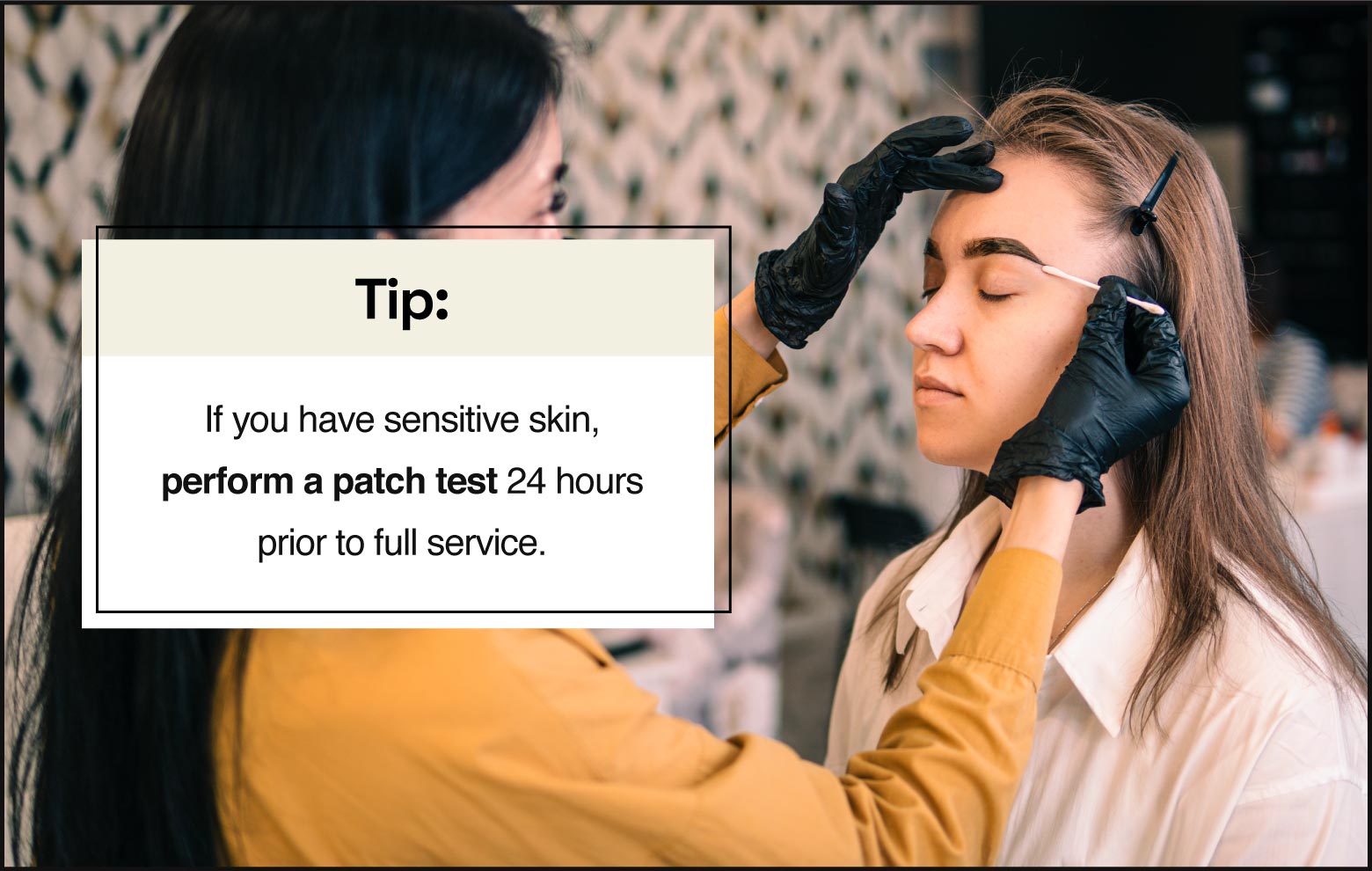
If your only concern is sensitive skin, always perform a patch test at least 24 hours prior to the full service (that goes for any beauty treatment!).
How do I know if I’m getting a safe service?
Henna is a safe service as long as you visit a reputable provider. There are a few ways you can ensure the service you’ll receive is up to professional standards — you’ll want to research both the salon you’re considering and the specific technician performing the service.
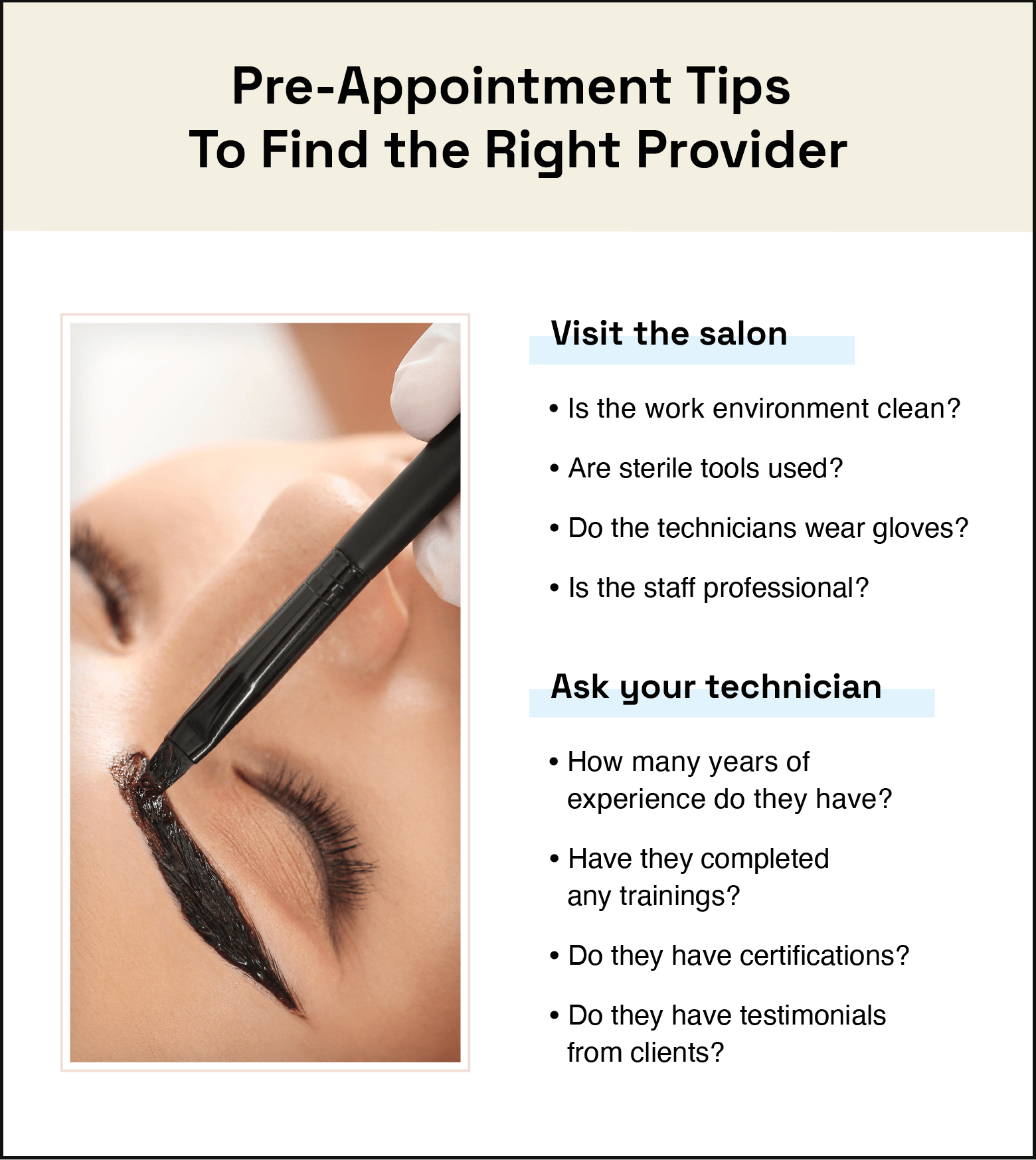
Visit the salon location you’re considering, and ask yourself the following:
- How clean is the work environment?
- Are sterile tools used for each client?
- Are new gloves used for each client?
- Do the technicians have a professional demeanor?
Find out the following information about the technician:
- Years of experience: How much experience do they have?
- Training and certifications: Have they completed any training or earned certifications for henna brow application?
- Testimonials from past clients: Do they have legitimate, positive testimonials of past clients who would recommend their work?
It’s always a good idea to give the salon a call and speak with the henna brow technician before getting a full treatment. That way, you can get a sense for their level of professionalism and willingness to answer any questions or concerns you may have. When doing your research prior to your service, look out for these red flags:
- Negative reviews on Yelp, Facebook, or other social media
- Heavily discounted prices (services priced too low are usually a sign of inexperience)
- Unprofessional workspace
- No prior training or experience
All of these issues can signal that a provider isn’t the best fit for a henna brow treatment. It might take a bit of time upfront, but doing your due diligence when selecting a provider is the best way to ensure you’re getting a safe service.
Henna brows are a low-commitment way to get the eyebrow look you’re after with a safer plant-based treatment, and choosing a great henna brow artist is the best way to ensure you love the results. The right professional will have the skills and experience to help give you the look you want while answering any questions or concerns along the way. Browse pre-vetted brow techs in your area to get the best possible henna brow treatment!
